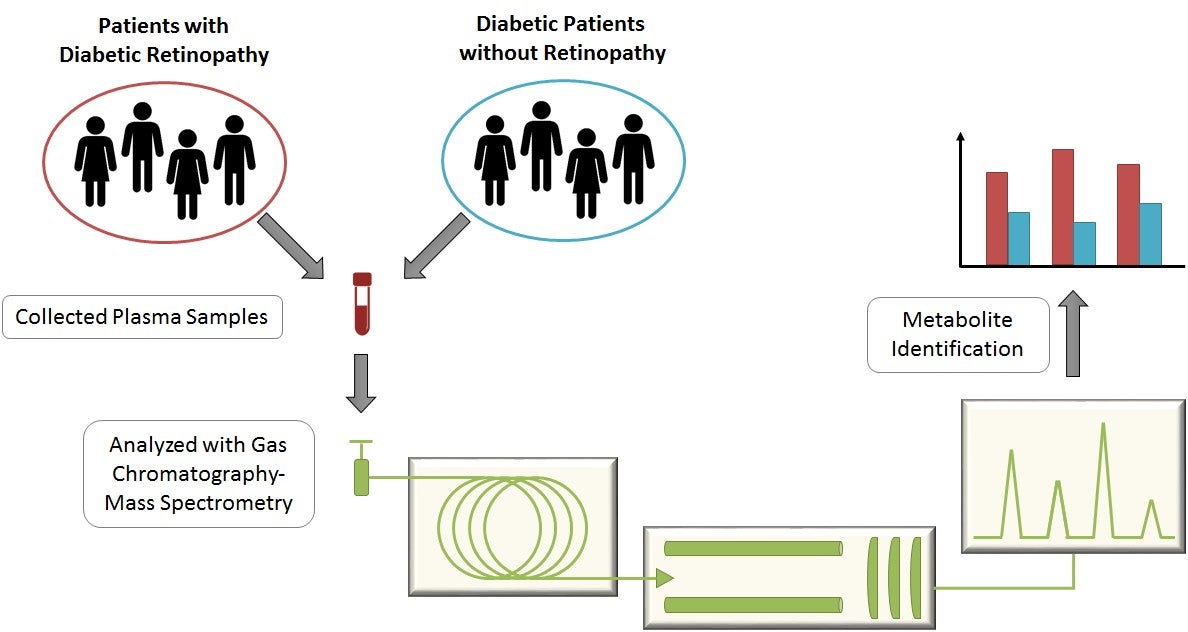Metabonomics reveals biomarkers of diabetic retinopathy in blood
Eric CHAN (Group Leader, Pharmacy) () September 13, 201613 Sep 2016. NUS pharmacists have discovered signatures of diabetic retinopathy in blood samples which can identify those at a higher risk.
Diabetic retinopathy, a form of diabetic eye disease, is the leading cause of impaired vision in working-age adults worldwide. It is difficult to predict the development of diabetic retinopathy in diabetic patients. A team led by Prof Eric CHAN from the Department of Pharmacy, NUS collaborated with the Singapore Eye Research Institute (SERI) where they discovered that patients suffering from diabetic retinopathy had higher levels of several metabolites (small molecules which are present in the human body). The research team, which includes Dr CHEN Liyan, a research fellow at SERI and a Ph.D. alumnus from Prof Chan’s group made this discovery by analysing blood plasma samples from diabetic patients using gas chromatography-mass spectrometry, a technique that is able to detect hundreds of compounds at the same time.
Patients with diabetic retinopathy often experience no symptoms in the early stage. Diabetic retinopathy can only be picked up by screening at an eye clinic. Some diabetic patients develop diabetic retinopathy even though their blood glucose is well-controlled. There is no cure for diabetic retinopathy but laser treatment can prevent worsening of the disease before it progresses to the severe stage. There is currently no test that can predict which diabetic patients will develop sight-threatening diabetic retinopathy.
Finding characteristic metabolites of diabetic retinopathy in blood plasma can help to identify patients at risk of developing severe diabetic retinopathy through a blood test. Such patients could be more closely monitored to prevent progression of the disease to the sight-threatening stage. Investigation of the roles of these metabolites could also uncover mechanisms behind disease progression. Moving forward, the research team plans to evaluate the predictive function of these metabolites in a larger group of patients.
The discovery made by the scientists is published in the Diabetes journal.

Figure shows the metabonomic profiling of blood plasma samples collected from diabetic patients with and without retinopathy. [Image credit: Chen Liyan]
Reference
Chen L, Cheng C-Y, Choi H, Ikram MK, Sabanayagam C, Zhou L*, Chan ECY*, Wong TY*, et al. “Plasma Metabonomic Profiling of Diabetic Retinopathy”. Diabetes (2016), 65, (4), 1099-1108.


